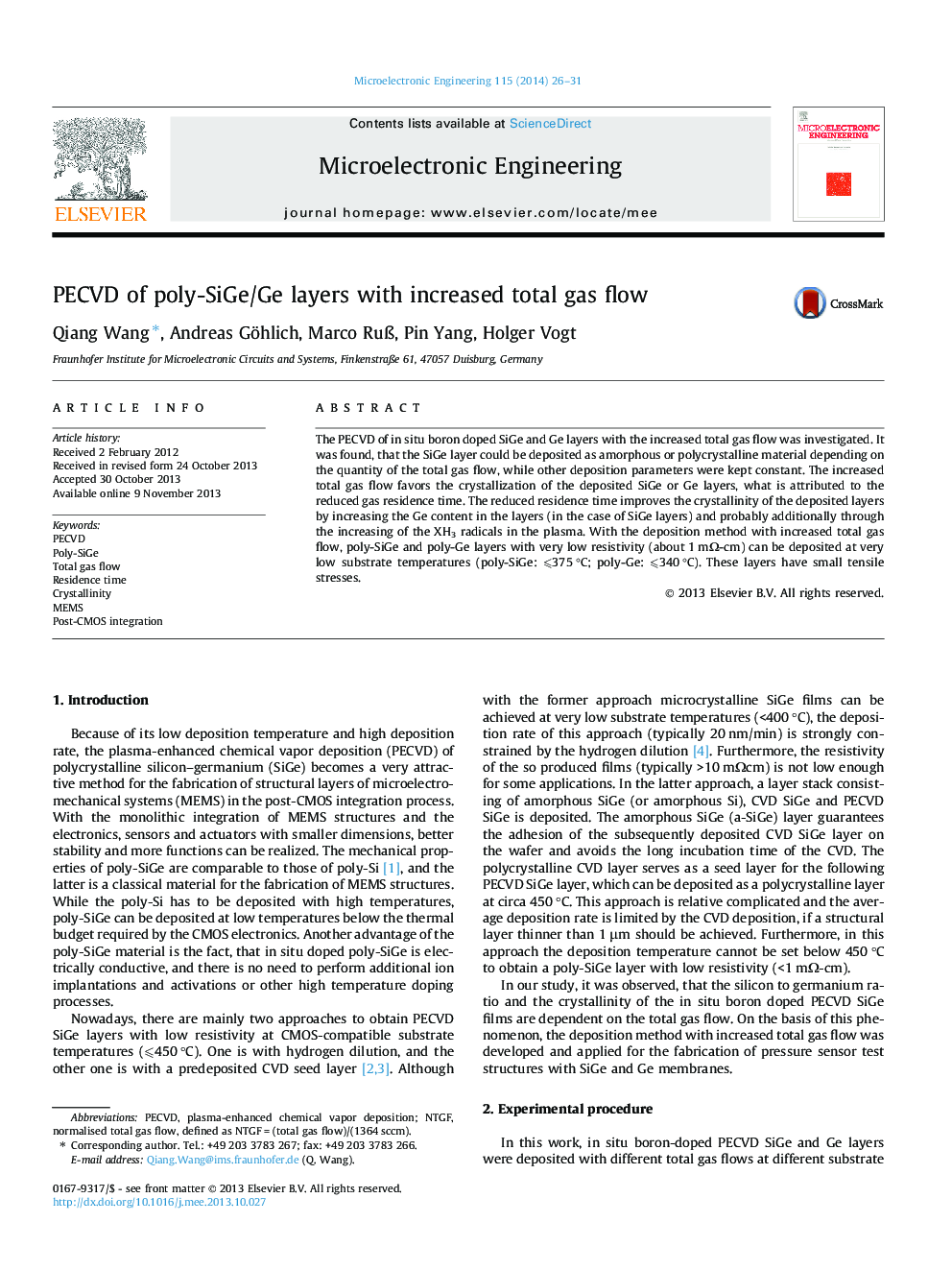| Article ID | Journal | Published Year | Pages | File Type |
|---|---|---|---|---|
| 542806 | Microelectronic Engineering | 2014 | 6 Pages |
•Poly-SiGe and Poly-Ge are deposited at substrate temperatures below 380 °C with high total gas flow.•Ge-content in the deposited SiGe layers increases with the increased total gas flow.•Crystallinity of the deposited SiGe and Ge layers is improved with the increased total gas flow.•Improved crystallinity is attributed to the reduced residence time of gas in the plasma.•Shorter residence time may cause increased Ge-content (for the SiGe layer) and more XH3 in the plasma.
The PECVD of in situ boron doped SiGe and Ge layers with the increased total gas flow was investigated. It was found, that the SiGe layer could be deposited as amorphous or polycrystalline material depending on the quantity of the total gas flow, while other deposition parameters were kept constant. The increased total gas flow favors the crystallization of the deposited SiGe or Ge layers, what is attributed to the reduced gas residence time. The reduced residence time improves the crystallinity of the deposited layers by increasing the Ge content in the layers (in the case of SiGe layers) and probably additionally through the increasing of the XH3 radicals in the plasma. With the deposition method with increased total gas flow, poly-SiGe and poly-Ge layers with very low resistivity (about 1 mΩ-cm) can be deposited at very low substrate temperatures (poly-SiGe: ⩽375 °C; poly-Ge: ⩽340 °C). These layers have small tensile stresses.
Graphical abstractFigure optionsDownload full-size imageDownload as PowerPoint slide
